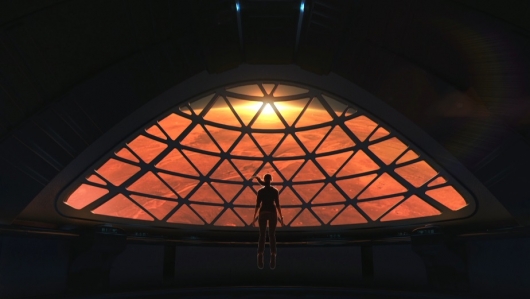Mars Colonization Is Closer Than You Think

October 6, 2016
On September 27, Elon Musk, founder and CEO of SpaceX and Tesla, announced his plan for making humans a multiplanetary species by colonizing Mars. It is common knowledge that Musk has wanted to colonize Mars for a long time, but has now laid out his plan for achieving his goal. At the International Astronautical Congress in Guadalajara, Mexico Musk gave his speech, titled “Making Humans a Multiplanetary Species”. His ultimate goal is to create a self-sustaining civilization on Mars by creating fleets of ships that could go to and return from Mars multiple times. Musk began his speech by explaining why we would go to Mars as opposed to other planets. He described Mars as being close to Earth and within a good range of the sun, “resource rich,” it has an atmosphere, the temperature range is fairly similar while a bit cooler, and the days on Mars are only 40 minutes longer than on Earth. Mars also has the potential to “terraform,” or transform to resemble Earth. Musk also made a point that there are 7 billion people on Earth versus 0 on Mars.
Musk then proceeded to talk about the cost of going to Mars. Right now, using traditional methods, the cost of one ticket would be about $10 billion. This leaves very few people who would be willing to and/or able to pay for this. Musk is attempting to bring down the cost of going to around $200,000, the median cost of a house in the United States, by creating rockets and boosters that are able to return to Earth after launch and be used multiple times. Earlier this year, SpaceX successfully sent a booster into orbit and landed it back on the launch platform. The most important things needed to improve costs, according to Musk, are full reusability of the ship, refueling the ship in orbit, propellant production on Mars, and the right propellant. Fuel reusability is important because of how large the ships will be, carrying about 100 people per trip. Reusing fuel helps with reusing the ship. Refueling the ship in orbit cuts costs because the ship is smaller and requires less engines for the trip. Producing propellant on Mars allows the ship to return to Earth and be reused and helps keep the size of the ship down. The right propellant is important because it needs to have the ability to be manufactured on Mars and fit the criteria for rocket fuel. Methane was picked as the fuel because it is a great rocket fuel, is low cost, reusable, and can be used fairly well in propellant transfer. Another important point is that methane can be made on Mars. Most of Mars’s atmosphere is CO2 and there is ice under the surface. These are the only 2 ingredients needed to make methane and is a simple procedure.
The plan for actually sending the ship into space would involve a ship, a booster, which is just used to launch the ship into space, and a tank for fuel. The booster would shoot the ship into space, putting it in Earth’s orbit. The booster would return, have the fuel tank attached, and return to space. The tank would attach to the ship and refill the ship. Both the tank and the booster would return to Earth while the ship continued on to Mars. After reaching Mars, the astronauts would remove their supplies and send the ship back to Earth to be used again. Musk plans on having about 1,000 ships at a time waiting in orbit for the Mars rendezvous, or the time when Earth and Mars are aligned. Each ship would hold about 100 people. To keep the crew entertained, movie theaters, restaurants, zero G games, and more will be inside the pressurized compartment of the ship. The ship itself will be mostly made out of carbon fiber and have multiple fuel tanks and engines to ensure reusability. There are 42 raptor engines on the booster’s base. 35 are on the outside ring of engines and are fixed in place. The 7 engines on the inside circle will move around to steer the booster. The trip time to Mars can last anywhere from 80 to 150 days.
In the background of Musk’s speech, a digital Mars rotated slowly terraforming to look surprisingly like Earth. SpaceX plans on sending its first unmanned mission to Mars in 2018 and the first colony in 2025. Musk believes that it will take anywhere from 40 to 100 years to create a self-sustaining civilization on Mars. The dream of going to Mars and living there could become a reality in the next few years. Until that time, we wish SpaceX luck and look forward to what is coming in the future.


































